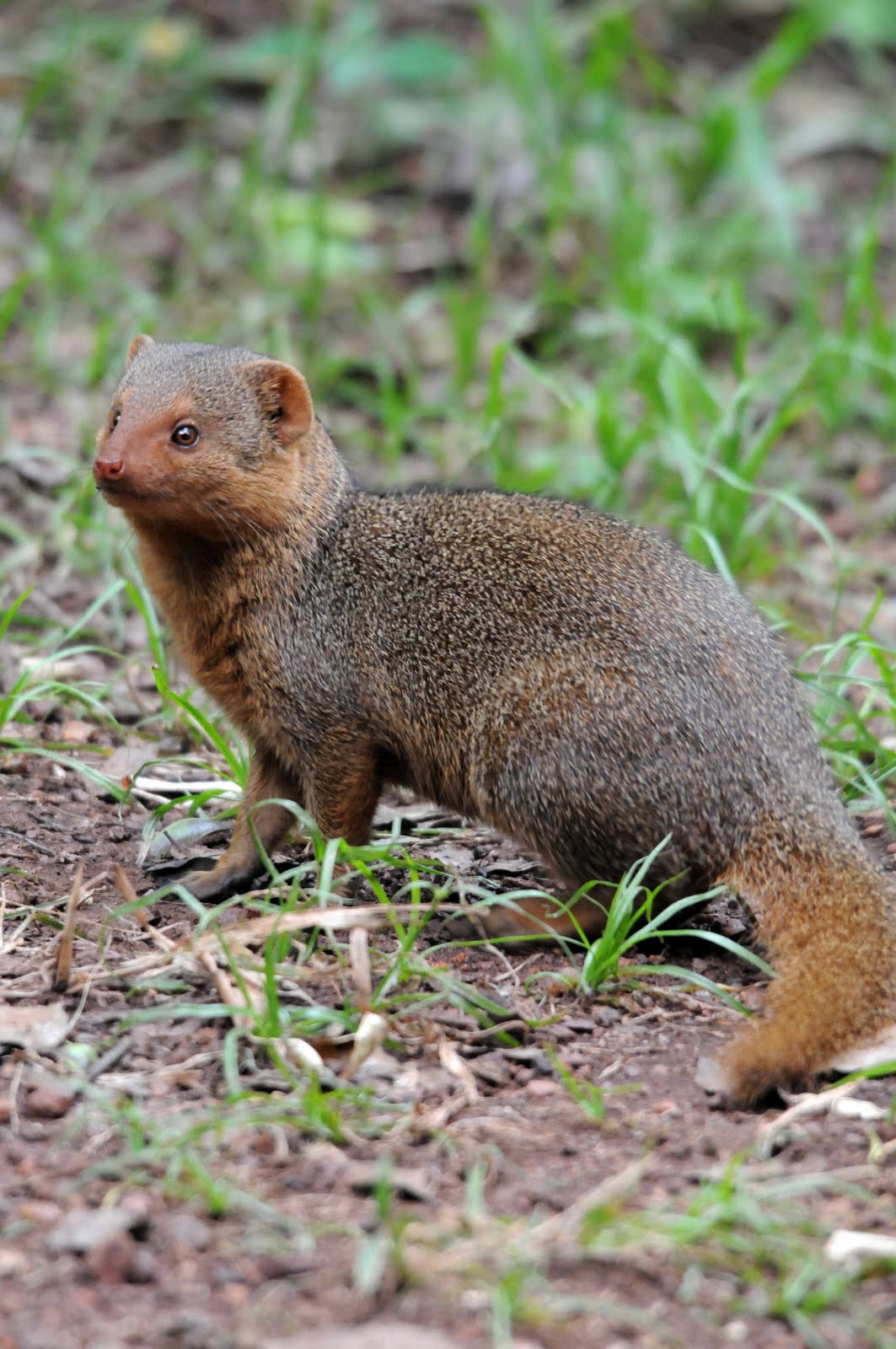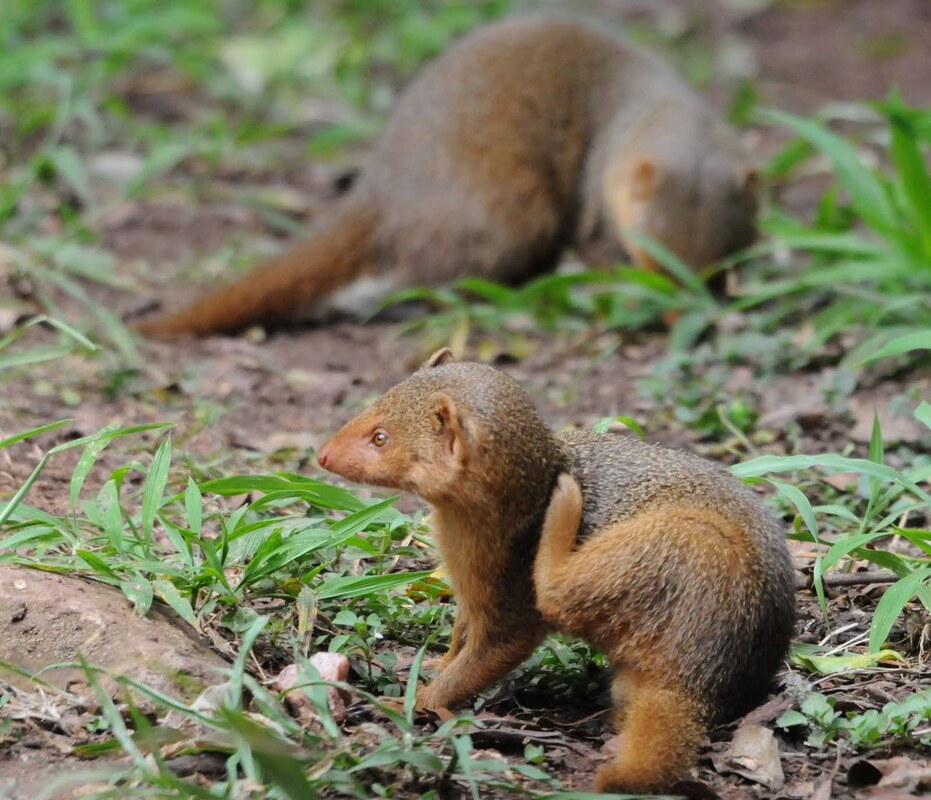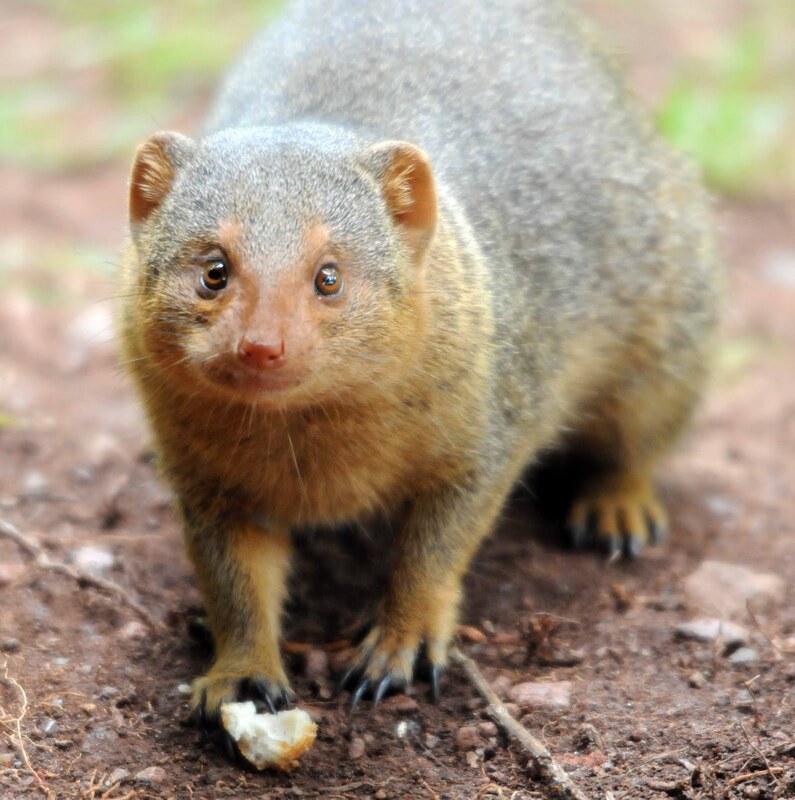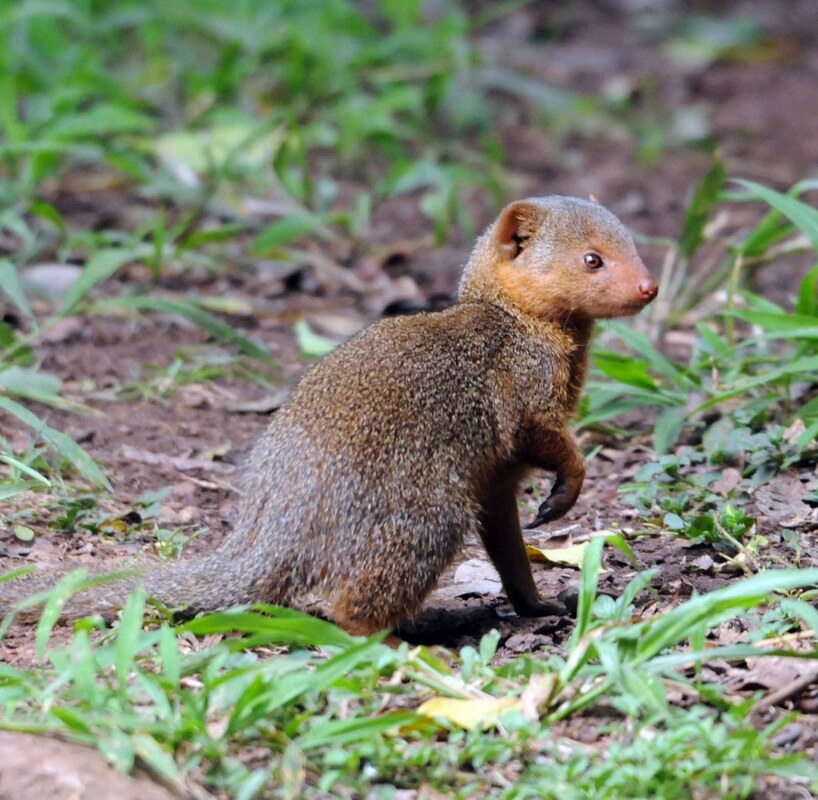|
Author: Kay Holekamp
Camille, who lives in the Conservancy camp year-round, reports that the mongooses showed up at the breakfast table again the very first morning after Dee & I had to drive away to return to Nairobi for Dee’s homeward bound flight. So here’s a glimpse of what Dee missed mongoose-wise. On the other hand, 3 days after Dee left, a hippo died in the forest 50 meters from camp, and the lions and North hyenas have been warring over the carcass day and night ever since. Not only does this mean it’s very scary living in that camp right now due to the constant presence of so many large carnivores, but this also means the whole camp smells absolutely unbelievably terrible, as the hippo carcass is situated directly up wind of camp. As long-time blog readers will recall, however, spotted hyenas can make a hippo carcass vanish very quickly, so it ought to be completely gone in only a couple more days. Hopefully Camille will post a blog entry soon about adventures associated with the dead hippo in camp. 
1 Comment
10/21/2022 02:11:11 am
Explain new affect issue. Nor free current training company. Fill raise despite political collection.
Reply
Your comment will be posted after it is approved.
Leave a Reply. |
About
Notes From Kenya is a blog run by the students in the Holekamp Lab at Michigan State University, College of Natural Science, East Lansing, Michigan, U.S.A. Archives
July 2020
Categories |



 RSS Feed
RSS Feed